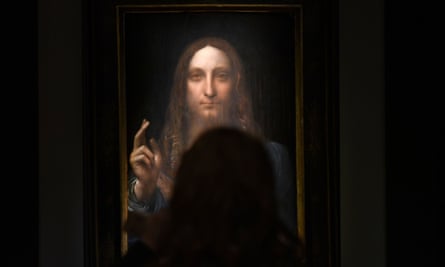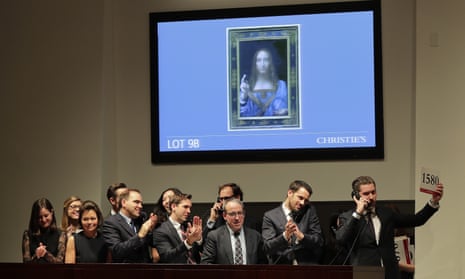If you walk around Mayfair or Manhattan at twilight and look up, you could glimpse a Damien Hirst spot painting through an apartment window. The simple circles of colour on a grid and a white background are recognisable and everywhere. There are more than 1,000 in existence, and they have been exhibited all over the world.
The spot paintings are visually inoffensive; if one catches your eye, it does not hold it. One works as well hung in the living room as it does in the boardroom. But whichever wall it does grace, even a child knows it’s a Hirst, though painted by his assistants, even if they can’t differentiate one work from another.
That is the state of modern-day art collecting: safe, boring and expensive. According to a recent UBS/PricewaterhouseCoopers report, the world’s billionaires have seen their net worth climb by more than $900bn in the past year, collectively topping $6tn.
There is a new rich class swimming in liquidity that can afford art with a high price-tag, which serves as both an asset, if an unreliable one, and a display of status. Chinese, Russian and Ukrainian billionaires have entered the market. Hedge fund managers trail behind them. A pricey artwork is just what you need after remodelling your billion-pound home: you splash your cash to display your wealth, if not your taste.
All of this goes some way to explain the astonishing price tag of Salvator Mundi, the most expensive painting ever sold at auction. The 500-year-old painting of Christ is thought to have been painted by Leonardo da Vinci. It sold for a record $450m (£341m) in Christie’s auction rooms in New York last Wednesday evening. The identity of the buyer has not been revealed.
Though Leonardo da Vinci was a masterful artist, Salvator Mundi is not a great work of art. Christ faces the viewer in a conventional composition, with one hand raised, the other holding a glass sphere. His eyes are blank; his hair is limp. Cleaned and repainted so often, and layered in varnish, there is little left of what was original. It probably was by Leonardo, but not many of the brushstrokes can be his. He used assistants a lot at the time it was painted, and now much of it is reconstruction.

The inflated price was the result of a brilliant marketing campaign. The auction house conjured up a spectacle of smoke and mirrors. They named the work the “male Mona Lisa”. Pre-sale viewings in London, New York, San Francisco and Hong Kong drew 27,000 people. They commissioned a video – entitled The Last da Vinci: The World is Watching – more visually pleasing and dramatic than the painting, chronicling the emotional response of viewers. The buyer purchased a celebrity, something famous.
Critics of the sale have trotted out the usual complaint, that the incredible amount of money could have been spent on hospitals and playgrounds. But I’d argue that there is nothing wrong with spending this much on art per se, just on this piece. More shocking than the price tag is that great works of art are available for a fraction of the Leonardo, but few collectors are interested.
The most telling move is that Salvator Mundi was sold in the auction houses’ post-war and contemporary sale, rather than in an Old Masters sale, where you expect to find paintings from the period between the 13th and 18th century. The Leonardo, thought to have been painted in early 1500, sat alongside the currently hot Jean-Michel Basquiat and Andy Warhol, from the 1980s and 1960s respectively, though the jaded may joke that much of the paint on the Leonardo is so recent that it qualifies.
In a few weeks’ time, there will be other far more worthwhile sales, but no bidding billionaires will be in attendance. The new money usually only sits in the auction room when something 20th century turns up. They leave when the old stuff arrives. Yet what is on offer at the December Old Masters sales at Christie’s and Sotheby’s, including one of Joseph Wright of Derby’s best-known works, An Academy by Lamplight, is breathtaking and, in context, extraordinarily cheap.
One of the first paintings listed, The Betrayal of Christ from the School of the Lower Rhine (circa 1510-15) is projected to go for £200,000 – £300,000. A late portrait by Titian should fetch £1m to £1.5m. Here you can get a decent Old Master, something museum-worthy, for a fraction of the cost of an unremarkable house in London.
What’s concerning is that in the past these would have been snapped up by collectors who were keen to demonstrate not only their status and wealth – vanities that have always driven the art market – but their erudition and social conscience. I’m thinking of the likes of the Anglo-Austrian art collector and art historian, Count Antoine Seilern, an old-school collector, one driven by scholarship, who devoted himself to the study of art history. He enrolled at the University of Vienna to study art history, and the subject of his doctoral dissertation was the Venetian influences on the ceiling paintings of Peter Paul Rubens. So loved was his collection of oil paintings that he rarely opened the blinds to his home in London’s South Kensington, where he lived after the second world war, to protect them; he largely refused to turn on the lights because he said it distorted the colours.
Seilern was one of a coterie of rich collectors who tried to buy great and important pictures, rather than, as now, chasing what was obvious. The men, and they were often men, did their own research, took risks, and bought what was unknown, unrecognised, and unfashionable. Among them was the American art historian Bernard Berenson, who worked for Joseph Duveen, a key dealer who bought art from European aristocrats and sold it to rising US robber barons in search of status. Duveen famously attributed his success to noticing that “Europe has a great deal of art, and America has a great deal of money”.
The public benefited from those connoisseur collectors in a way that it doesn’t from modern-day ignorant billionaires. They shaped taste and furnished great museums and galleries with tremendous art work: Duveen helped build the great collections of Mellon and Kress, now in the National Gallery of Art in Washington; he funded the Duveen Gallery in the British Museum designed to house the Parthenon sculptures. Even Seilern’s paintings eventually came down from his darkened walls and were hung in broad daylight as the bulk of his collection was bequeathed to the Courtauld Institute of Art. Go there to see a true masterpiece.
Tiffany Jenkins is the author of Keeping Their Marbles: How the Treasures of the Past Ended Up in Museums… And Why They Should Stay There
